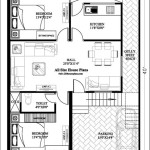House Renovation Project Plan: A Comprehensive Guide
Undertaking a house renovation project can be a significant undertaking, requiring careful planning and execution to achieve desired outcomes. A well-structured project plan serves as a roadmap, guiding the renovation process from initial concept to final completion. This article will outline the key components of a comprehensive house renovation project plan, emphasizing the importance of each stage in ensuring a successful renovation.
A renovation project plan allows homeowners to define project objectives, allocate resources effectively, manage timelines, and mitigate potential risks. Without a plan, renovations can easily become disorganized, exceeding budget expectations, falling behind schedule, and ultimately failing to meet the homeowner's vision. A well-defined plan is essential for efficient communication among all stakeholders, including homeowners, contractors, architects, and designers. It ensures everyone is working towards the same goal, minimizing misunderstandings and conflicts.
Moreover, a comprehensive plan aids in securing necessary permits and approvals from local authorities. Many renovation projects require permits, and the application process often necessitates detailed drawings, specifications, and adherence to building codes. Preparing this documentation as part of the planning phase streamlines the permit acquisition process and prevents delays.
Key Point 1: Defining Project Scope and Objectives
The first step in developing a house renovation project plan is to clearly define the scope and objectives of the project. This involves identifying the areas of the house that will be renovated, the specific changes to be made, and the desired outcomes. It is crucial to be realistic about budget constraints, time limitations, and potential challenges.
The scope of the project should be as specific as possible. Instead of stating a vague goal like "renovate the kitchen," a more precise objective would be "remodel the kitchen to include new cabinets, countertops, appliances, and flooring, while expanding the footprint by removing a non-load-bearing wall." This level of detail helps in obtaining accurate cost estimates and creating a realistic timeline.
Objectives should be aligned with homeowner’s needs and preferences, such as improving functionality, enhancing aesthetics, increasing property value, or addressing necessary repairs. It is important to prioritize objectives based on their importance and feasibility. For example, addressing a structural issue should take precedence over cosmetic improvements.
Consideration should also be given to the long-term impact of the renovation. Will the changes improve energy efficiency? Will they increase the home's resale value? Will they accommodate future needs, such as aging in place? These factors should influence the project's objectives and guide decision-making throughout the renovation process.
Once the scope and objectives are defined, they should be documented in a written statement. This statement will serve as a reference point throughout the project, ensuring that all decisions remain aligned with the initial goals. It can also be shared with contractors and other stakeholders to ensure everyone is on the same page.
Key Point 2: Budgeting and Financing
Establishing a realistic budget is paramount to a successful renovation project. Underestimating costs is a common pitfall that can lead to financial strain and project delays. A comprehensive budget should account for all anticipated expenses, including materials, labor, permits, design fees, and contingency funds.
The initial budget should be a detailed estimate based on research, consultations with contractors, and market pricing for materials. Obtain multiple quotes from different contractors for each aspect of the renovation. Compare these quotes carefully, considering not only price but also the contractor's experience, reputation, and references. Beware of unrealistically low bids, as they may indicate substandard workmanship or hidden costs.
Allocate a contingency fund to cover unexpected expenses or problems that may arise during the renovation. A contingency fund of 10-20% of the total budget is generally recommended to provide a buffer for unforeseen issues, such as hidden damage, code compliance issues, or changes in design preferences.
Explore various financing options to fund the renovation. These may include personal savings, home equity loans, lines of credit, or renovation loans. Compare interest rates, loan terms, and fees from different lenders to determine the most suitable financing option. Consider the tax implications of each financing option.
Throughout the renovation, track expenses meticulously and compare them to the budget. Use a spreadsheet or budgeting software to monitor costs and identify any potential overruns early on. Make adjustments to the project as needed to stay within budget. Value engineering, which involves finding cost-effective alternatives without compromising quality, can be a useful strategy for controlling expenses.
It is also beneficial to establish a payment schedule with contractors. Typically, payments are made in installments based on the completion of specified milestones. Avoid paying a large upfront deposit, as this can leave you vulnerable if the contractor fails to deliver on their promises.
Key Point 3: Contractor Selection and Management
Selecting the right contractor is a critical decision that can significantly impact the success of a house renovation project. A qualified and reputable contractor will have the experience, skills, and resources to execute the project effectively and efficiently. Thorough vetting of potential contractors is essential before making a final decision.
Begin by obtaining recommendations from friends, family, neighbors, or online review platforms. Check the contractor's license and insurance credentials to ensure they are properly qualified and insured to perform the work. Verify their license status with the relevant state or local licensing board. Request and check references from previous clients to assess the contractor's reputation and track record.
Schedule in-person interviews with potential contractors to discuss the project in detail. Ask about their experience with similar projects, their approach to project management, and their communication style. Obtain written bids from multiple contractors and compare them carefully. Ensure that the bids include a detailed breakdown of costs, including materials, labor, and permits.
Once a contractor is selected, establish a clear and comprehensive contract that outlines the scope of work, payment schedule, project timeline, and dispute resolution process. The contract should also include provisions for change orders, which are written agreements to modify the scope of work or the contract price.
Throughout the renovation, maintain regular communication with the contractor. Schedule regular progress meetings to discuss any issues or concerns and to ensure that the project is on track. Address any problems promptly and proactively to prevent them from escalating. Document all communication and decisions in writing to avoid misunderstandings.
Monitor the contractor's work closely to ensure that it meets quality standards and adheres to building codes. Conduct regular inspections and address any deficiencies immediately. If necessary, engage a third-party inspector to provide an independent assessment of the work.
Finally, ensure that all necessary permits are obtained and that the work is inspected by local authorities before making final payment to the contractor. Obtain lien waivers from all subcontractors and suppliers to protect against potential claims for unpaid work or materials.
Beyond these key components, the project plan must also consider other factors such as the design aspects of the renovation, the procurement of materials, and the scheduling of tasks. The design phase involves creating detailed plans and specifications for the renovation, including floor plans, elevations, and material selections. These plans should be reviewed and approved by the homeowner and the contractor before construction begins.
Material procurement involves sourcing and purchasing the necessary materials for the renovation. This can be a time-consuming process, so it is important to start early and allow ample time for delivery. Consider purchasing materials in bulk to save money, but be sure to store them properly to prevent damage or theft.
Task scheduling involves creating a detailed timeline for the renovation, outlining the sequence of tasks and the estimated duration of each task. This timeline should be realistic and flexible, allowing for potential delays or unforeseen circumstances. A well-managed timeline can help ensure that the renovation is completed on time and within budget.
In summary, a comprehensive house renovation project plan is essential for a successful renovation. By defining the scope and objectives, establishing a realistic budget, selecting a qualified contractor, and managing the project effectively, homeowners can minimize risks and achieve their desired outcomes. The planning phase is an investment of time and effort that will pay dividends throughout the renovation process.

Home Construction Plan Template Remodeling Templates

House Renovation Project Plan Template Elegant Free Management Templates For Construct Projects Remodeling

Home Renovation Project Plan 10 Examples Format

Home Renovation Project Plan 10 Examples Format

How To Plan Your Project Timeline With A Construction Schedule Template

Home Renovation Project Plan Template Inspirational Oconnorhomesinc Plans House Projects Planning

How To Plan A Home Renovation Full Step By Guide

Remodel Project Plan Template Luxury The 2024 17 Bud Governor S State Fice Bui House Renovation Projects Business Example Management Templates

Home Renovation Planner Free Printable Diy Reno Project Our Handcrafted Life

How I Use Excel To Organize A Home Renovation Budget Spending Program Paint Colors Contacts Quotes








